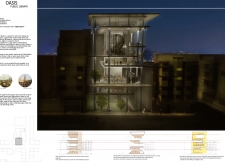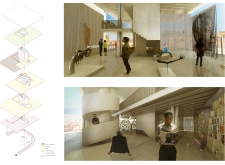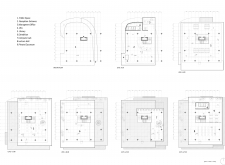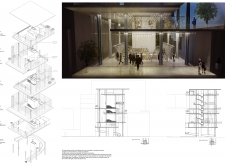5 key facts about this project
## Analytical Report on the OASIS Public Library Architectural Design
### Overview
Located in the densely populated area of Casablanca, Morocco, near the historic Old Medina, the OASIS Public Library is designed as a community hub that engages with its urban and historical context. The intent is to promote knowledge sharing through an inviting spatial arrangement that serves diverse community members. The design emphasizes integration with the surrounding environment, creating a functional resource for the local populace.
### Spatial Strategy
The library's layout consists of a series of interconnected spaces, each designated for specific activities such as reading, exhibitions, lectures, and digital access. The vertical organization allows for multi-level interactions, enhancing user engagement throughout the building. The facade, composed primarily of extensive glazing, promotes transparency and facilitates natural light, contributing to an uplifting atmosphere within the library.
### Materiality and Sustainability
The selection of materials is essential in articulating the library's design philosophy. Low-ion curved glass features prominently in the facade, maximizing transparency while reducing energy consumption. The use of concrete as a structural element provides both durability and opportunities for sculptural forms within the design. Complementary wooden and metal finishes contribute warmth and texture to the interior, creating a balanced aesthetic. Additionally, the emphasis on sustainable design principles reflects a commitment to energy efficiency and minimizing environmental impact, thereby enhancing the library's role as a modern public space.
The library includes a central atrium, which serves as a communal gathering area enhanced by artistic features made from locally sourced materials, reinforcing its connection to the Moroccan cultural context. A spiral staircase not only connects different levels but also acts as a visual highlight within the space. These strategic design choices collectively position the OASIS Library as a relevant and functional element within the urban fabric of Casablanca.






















































